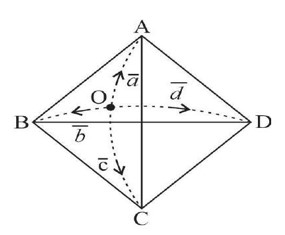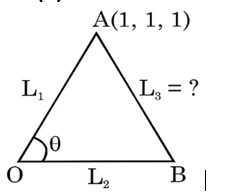Three Dimensional Geometry
Get insights from 212 questions on Three Dimensional Geometry, answered by students, alumni, and experts. You may also ask and answer any question you like about Three Dimensional Geometry
Follow Ask QuestionQuestions
Discussions
Active Users
Followers
New answer posted
2 months agoContributor-Level 9
The line x + y – z = 0 = x – 2y + 3z – 5 is parallel to the vector
Equation of line through P(1, 2, 4) and parallel to
Let
is perpendicular to
Hence
New answer posted
2 months agoContributor-Level 9
So for = 4, it is having infinitely many solutions. = -6 -
For distance of from 8x + y + 4z + 2= 0 units
New answer posted
2 months agoContributor-Level 10
Line L is
this line L makes an angle of 45° with the plane
Required distance PQ is perpendicular distance of plane from P is i.e.,
New answer posted
2 months agoContributor-Level 9
Equation of any plane passing through the line of intersection of planes (1) and (2)
If (3) & (4) is same plane.
(i)
(ii) (iii)
By (i) & (ii)
By (ii) & (iii)
New answer posted
2 months agoContributor-Level 9
Magnitude of all vectors will be same as well as angle between these vectors will also be same.

New answer posted
2 months agoContributor-Level 10
Volume = |a b c; b c a; c a b| = |3abc – a³ – b³ – c³|
= | (a + b + c) (a² + b² + c² – ab – bc – ca)| = | (a + b + c) (a + b + c)² – 3 (ab + bc + ca)|
= |9 (81-3 * 15)| = 324
Taking an Exam? Selecting a College?
Get authentic answers from experts, students and alumni that you won't find anywhere else
Sign Up on ShikshaOn Shiksha, get access to
- 65k Colleges
- 1.2k Exams
- 679k Reviews
- 1800k Answers

